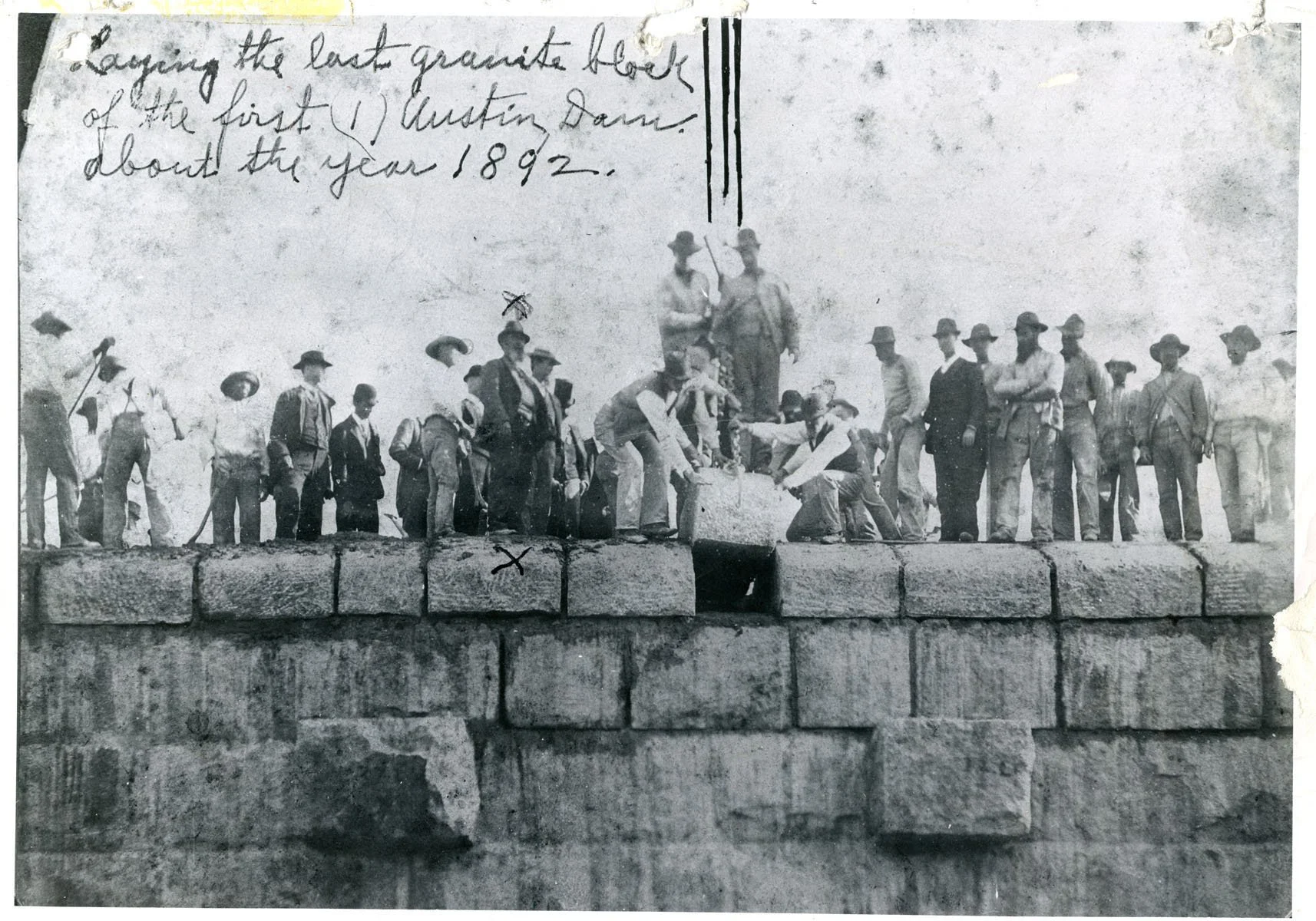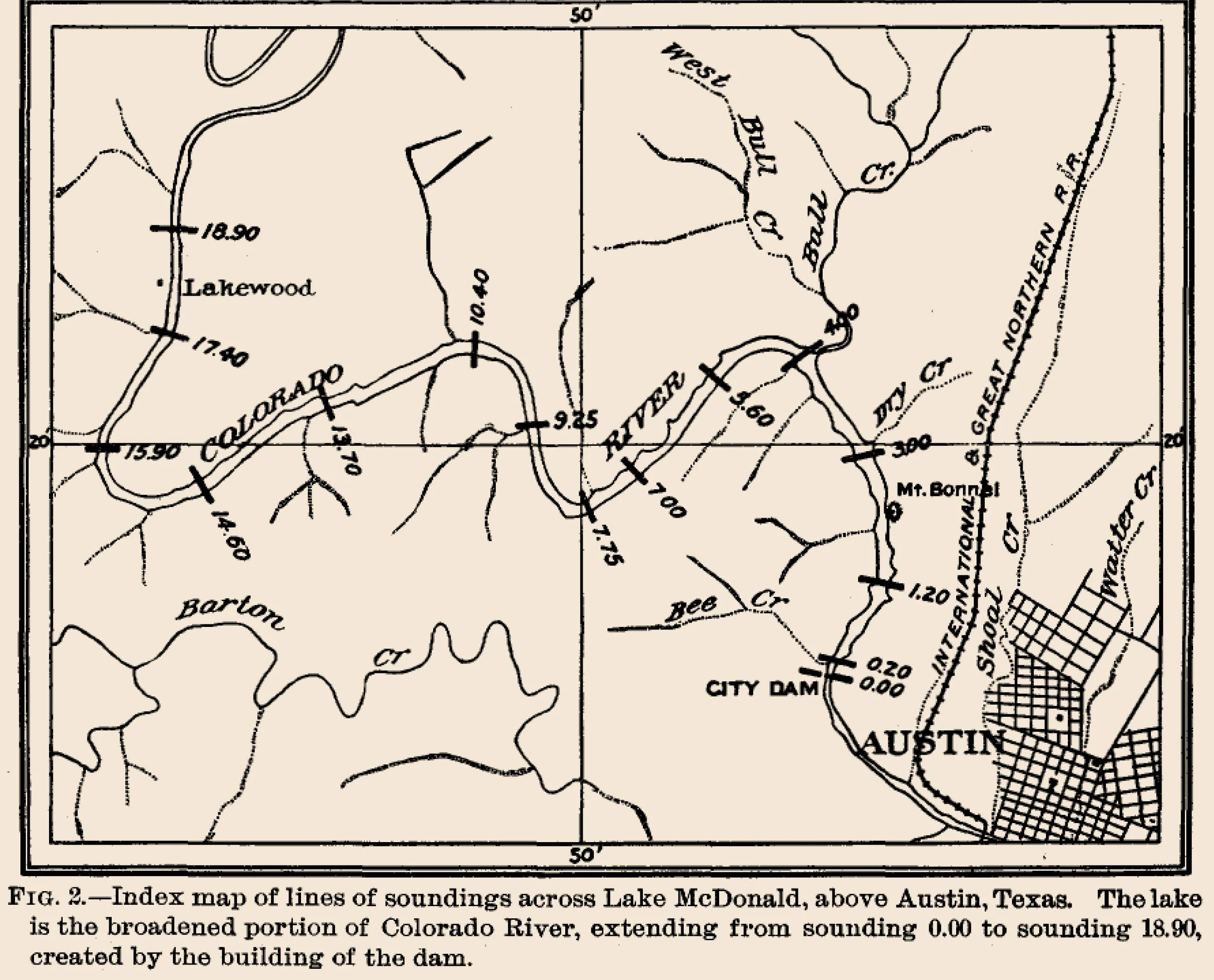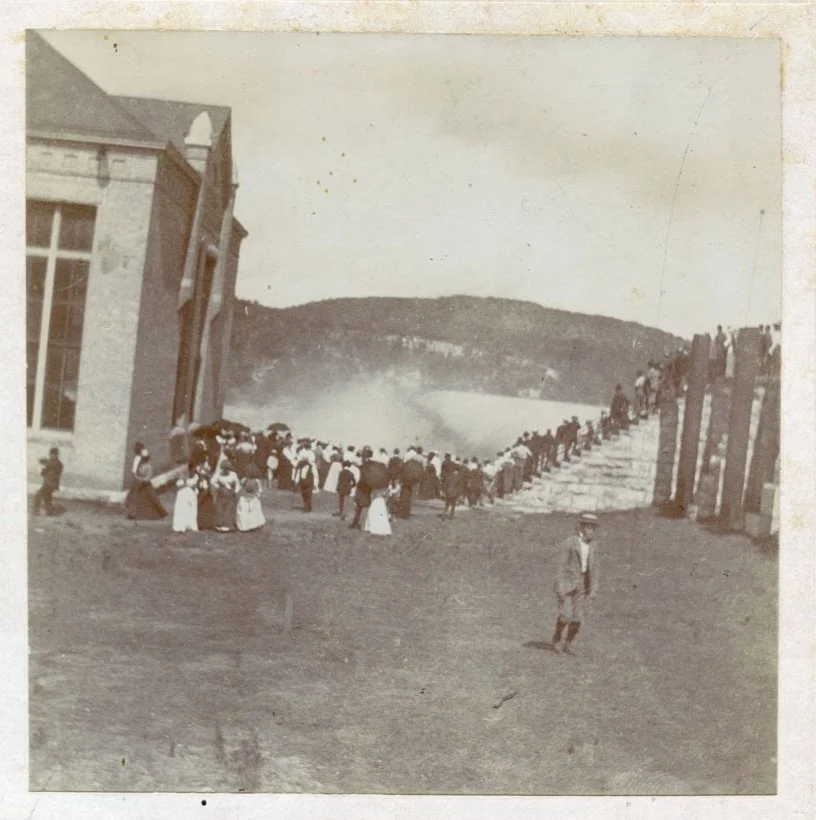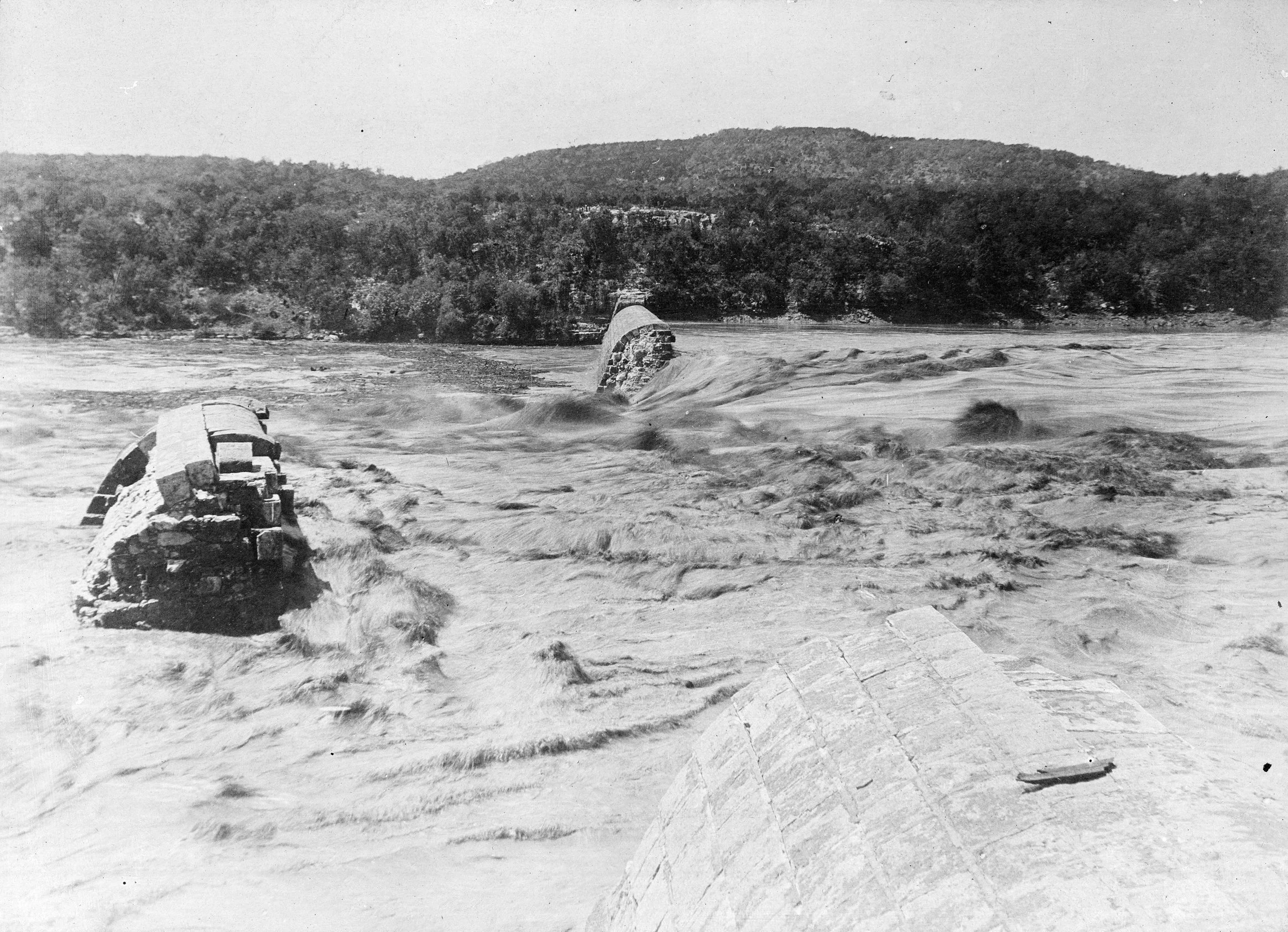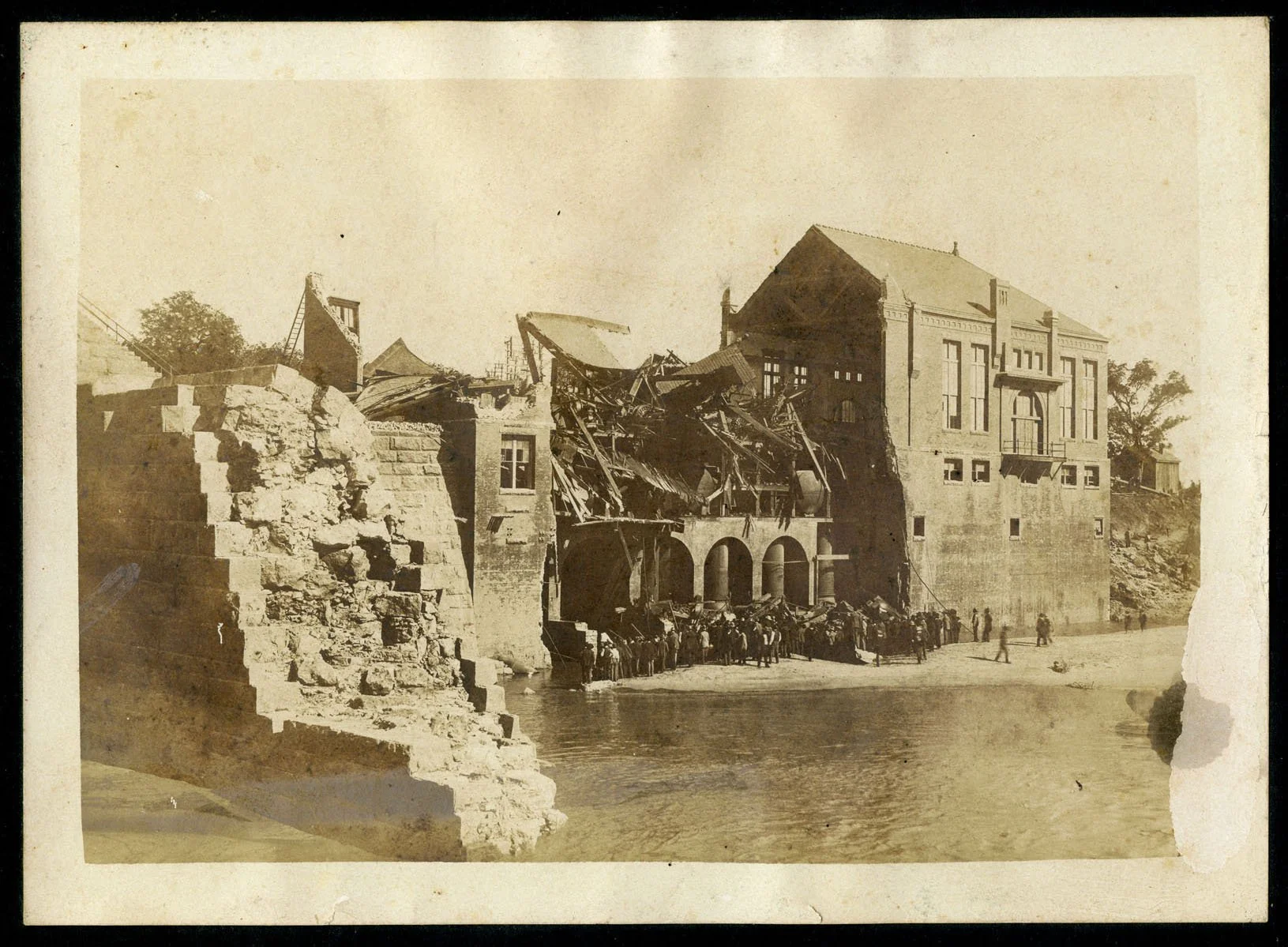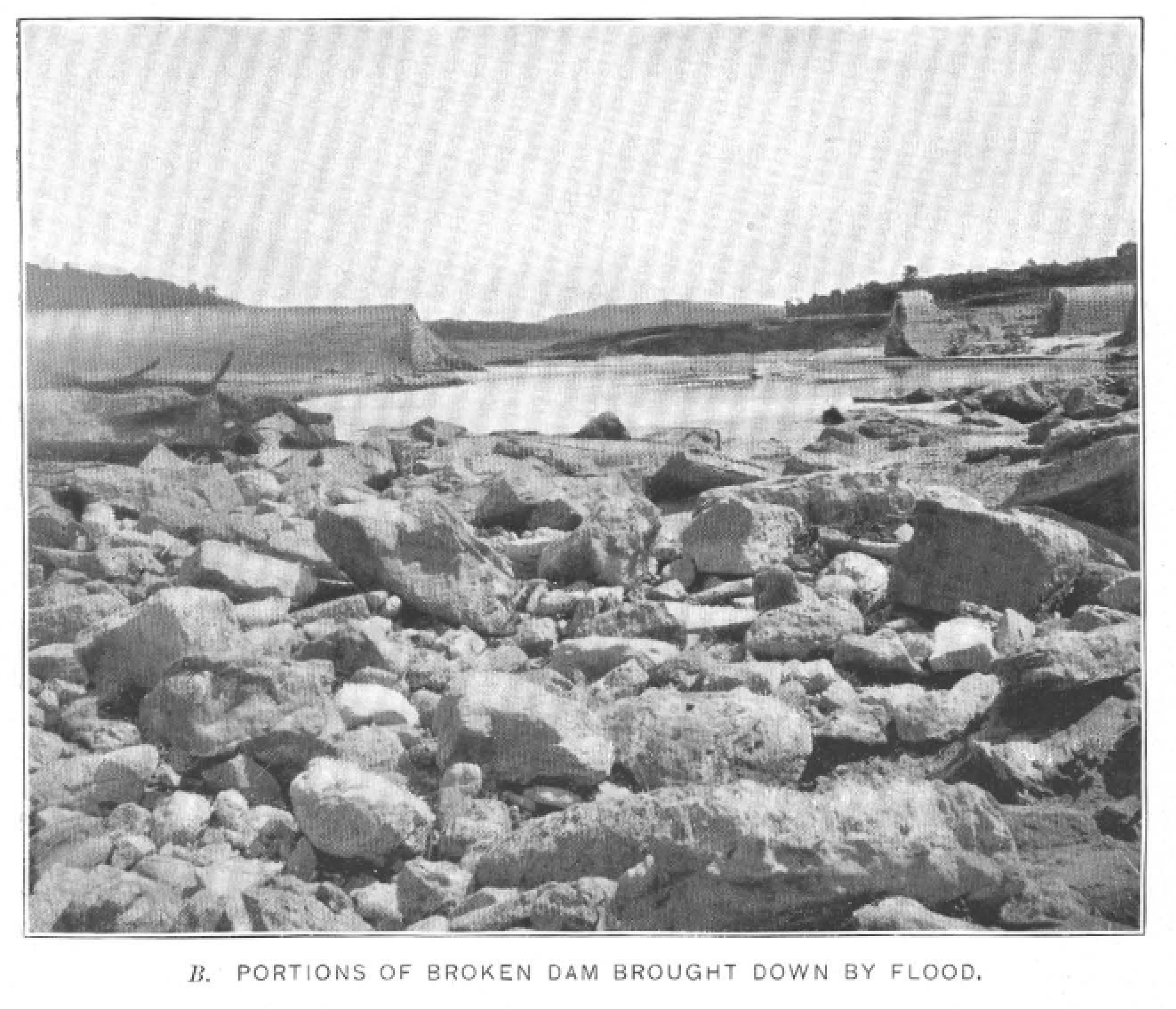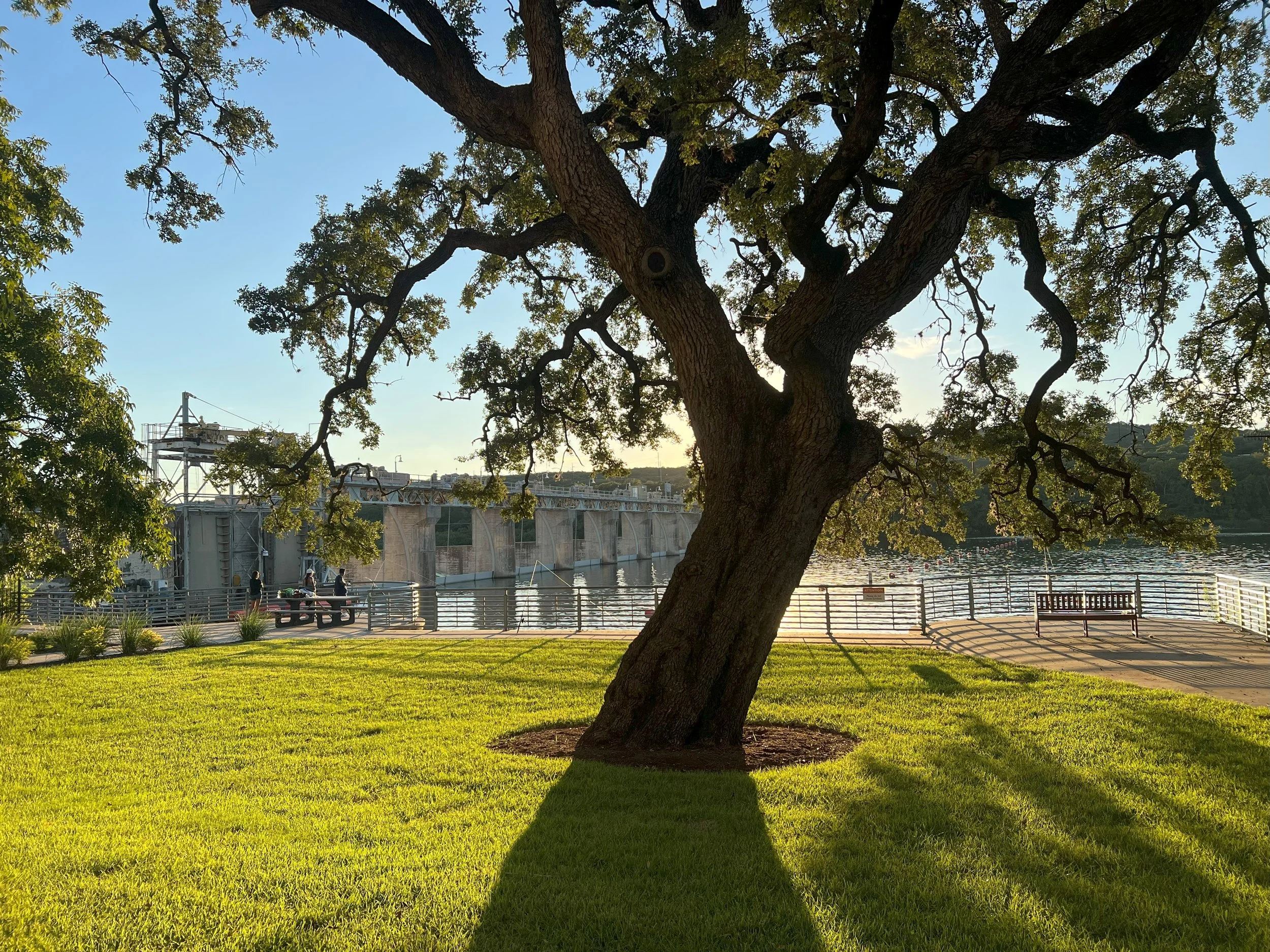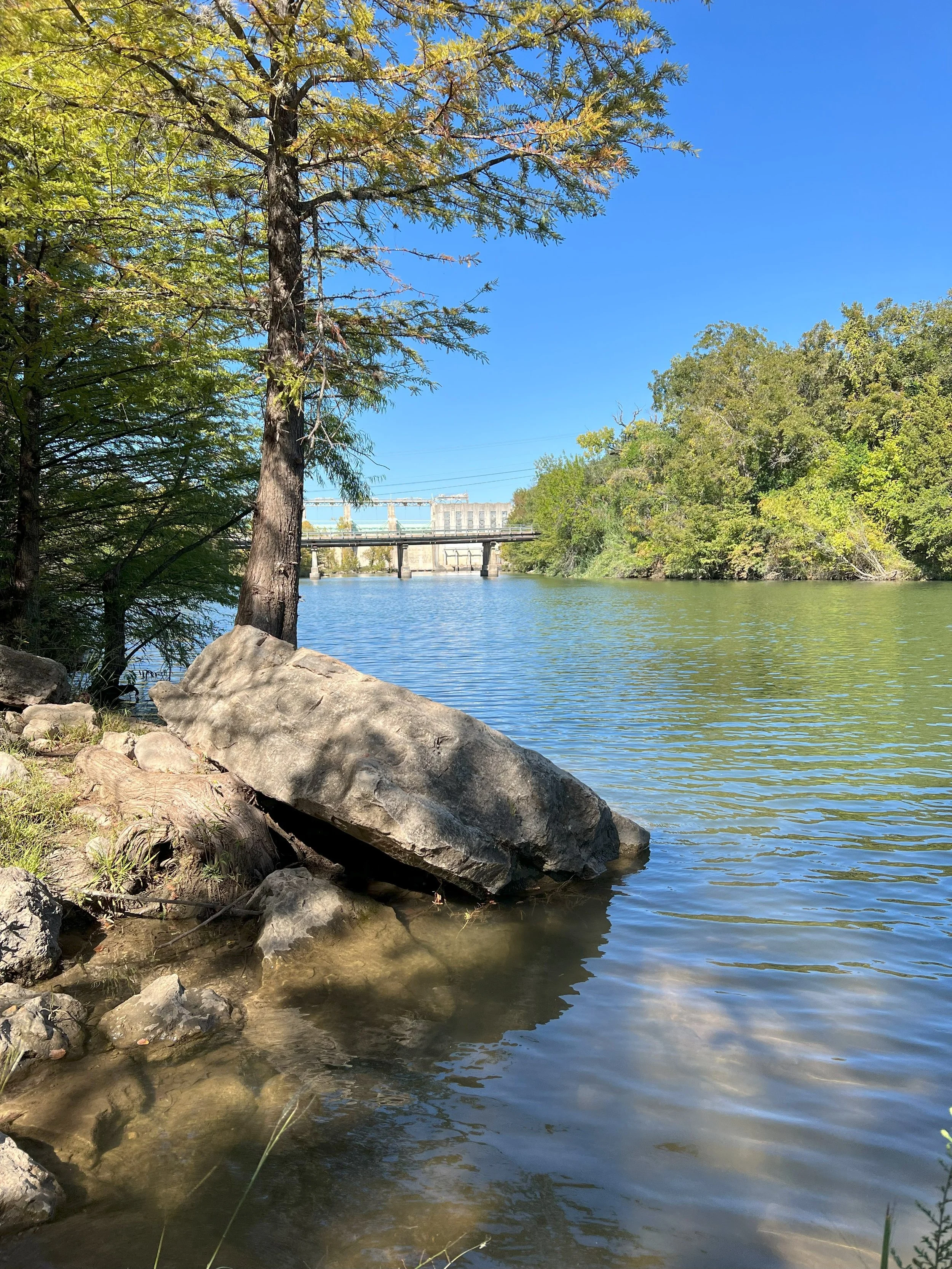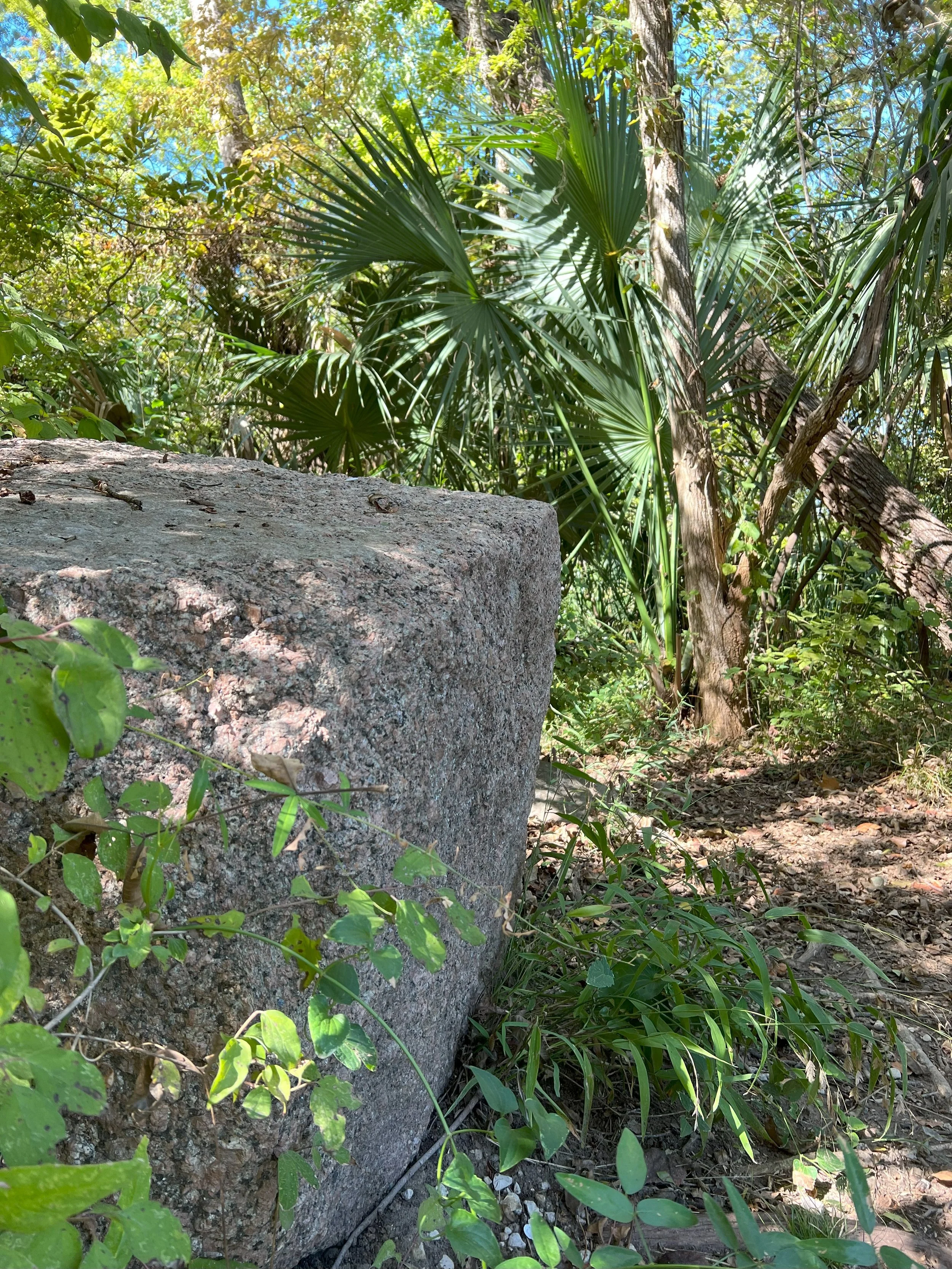
The promise of the Austin dam
The Austin dam was completed in 1893, in the same location as the present-day Tom Miller Dam, adjacent to Lake Austin Boulevard near Hula Hut restaurant.
The original engineer, Joseph Frizell, disliked the site for several reasons and recommended an alternate location 2 miles further upriver. When his concerns were dismissed and his objections overruled, Frizell left the project in disgust.
The dam included a powerhouse to provide electricity to the city’s streetlights, homes, and electric streetcars. Developers imagined that the dam’s hydropower would bring new industrial mills to the city, along with the opportunities for recreation and commerce that would arise from the new Lake McDonald.
The failure & the flood
A few years after the dam was built, torrential rains saturated central Texas on a Friday night in early April. When the sun came out the next morning on April 7, 1900, Austin citizens flocked to the dam to marvel at the 12 feet of rushing water flowing over the top.
At 11:20 am, the granite wall of the dam snapped with a sound like a gunshot. The central portion of the dam buckled and separated, sliding downriver and releasing the pent-up waters of Lake McDonald, which surged toward downtown.
The terrified crowds fled, scrambling as far from the water as they could. Some of the onlookers were swept away, and those who remained watched in horror as the flood demolished the campsites of several destitute families who were living on the river’s edge, never to be seen again.
Two utility workers on duty that day survived by escaping the powerhouse, but eight other men were killed as the structure was pulverized by the rushing water.
Some members of the crowd jumped on horseback, hoping to outpace the flood and warn low-lying areas of the coming danger. First-hand survivor accounts describe mounted couriers shouting in the streets, exhorting citizens to drop everything and flee uphill for their lives.
Within 20 minutes of the dam’s failure, the water was 60 feet deep and nearly a mile wide. The flood surged eastward through what is now Lady Bird Lake, carrying with it debris, trees, livestock, and entire houses. The bridge on Congress Avenue withstood the onslaught, although screaming crowds rushed to either shore as they saw the wall of water approach. The Montopolis bridge was destroyed.
More than 50 people were killed in the flood, although a precise death toll was never obtained, particularly because contemporary accounts did not identify numerous people of color who were drowned or missing.
The aftermath
The aftermath was grim. Families sought missing loved ones.
Volunteers moved debris by hand as they organized rescue and recovery efforts.
Without power or water or a working sewage system, Austin was hobbled and vulnerable.
Although Houston and other cities kindly sent electrical and firefighting equipment as soon as the trains were running, the flood severely damaged Austin’s infrastructure. It would be nearly a year before the electric streetlights shone again on Congress Avenue.
And so, amid overwhelming loss and grief, the city of Austin was left to pick up the pieces in the dark.
Today
Today, the history of the dam is hidden in plain sight. An effort to rebuild the broken dam began in 1912 but was halted in 1915 after another flood. Eventually, with the aid of federal funding during The New Deal, the dam was rebuilt on the same site and christened as the Tom Miller Dam in 1940. Some pieces of the previous dam are incorporated into the current structure, while others can be seen just south of the dam at Red Bud Isle.
There, modern visitors can find huge blocks of pink granite dotting the walking trails and seating area—some still displaying the perfectly bored holes made by nineteenth century laborers.
These are the building blocks of the dam that failed, first dislodged by rainwater and later moved to Red Bud Isle where they now rest quietly in the shade, a silent testament to those who were lost.
Back to Flood of Spirits
Photo credits: Other than the captioned images, all historical photos are presented courtesy of the photo archives of the Austin History Center [PICA-03846, C000065, PICA-17933, PICA-38249, PICA-09067, C00736, PICA-17452, PICA-17687, PICA-38252, PICA-17502, AF-P6150-58-002, PICA-03970, PICA-10892, PICA-38253], Austin History Center, Austin Public Library. The captioned images (“Fig. 2—Index map…” and “B. Portions of…”) come from Taylor, Thomas U., “The Austin Dam,” published by the U.S. Department of the Interior, United States Geological Survey, Division of Hydrography, Water-Supply Paper No. 40, PL. XIII, September 20, 1900. Contemporary photos are provided by Cheerful Secrets LLC.


